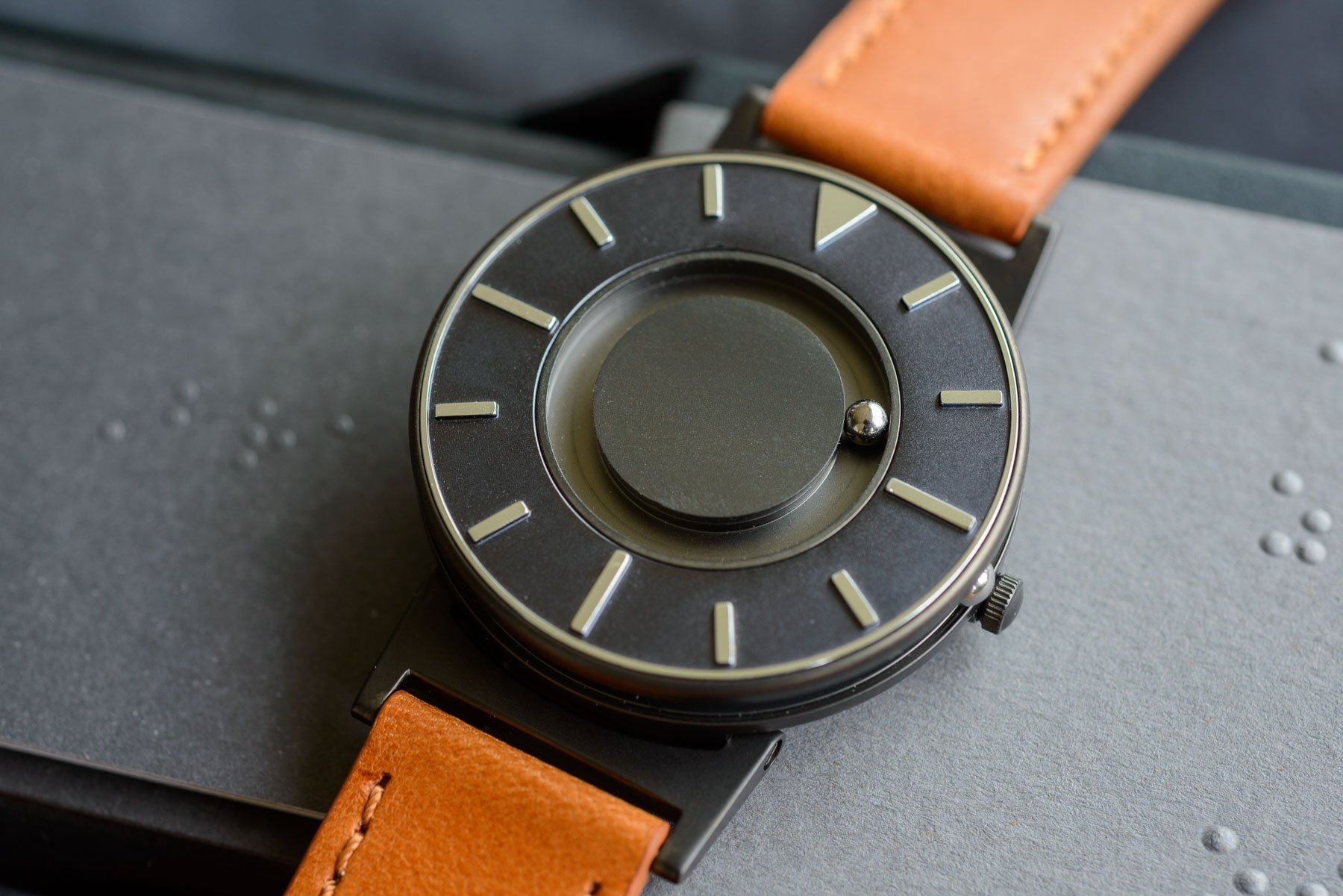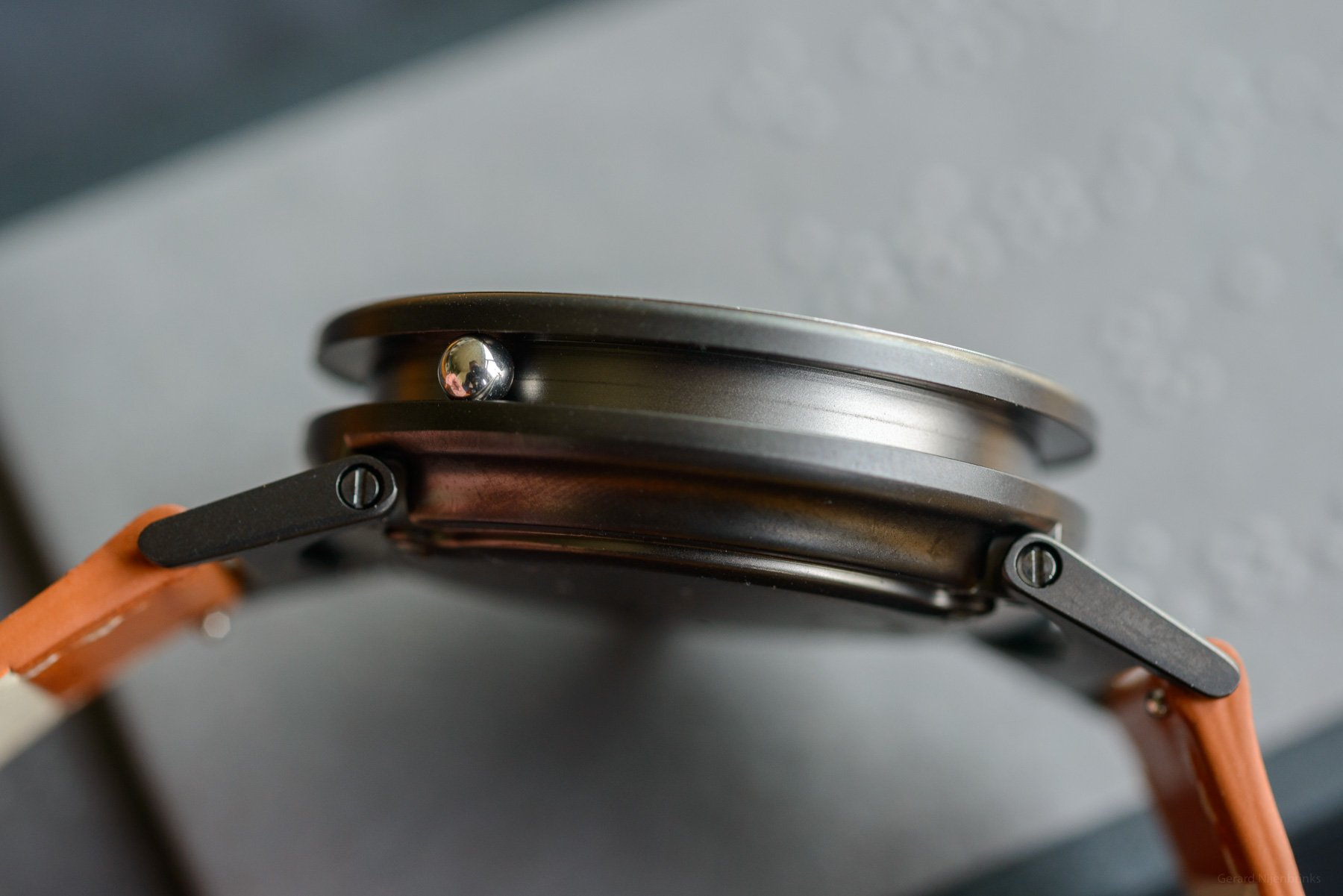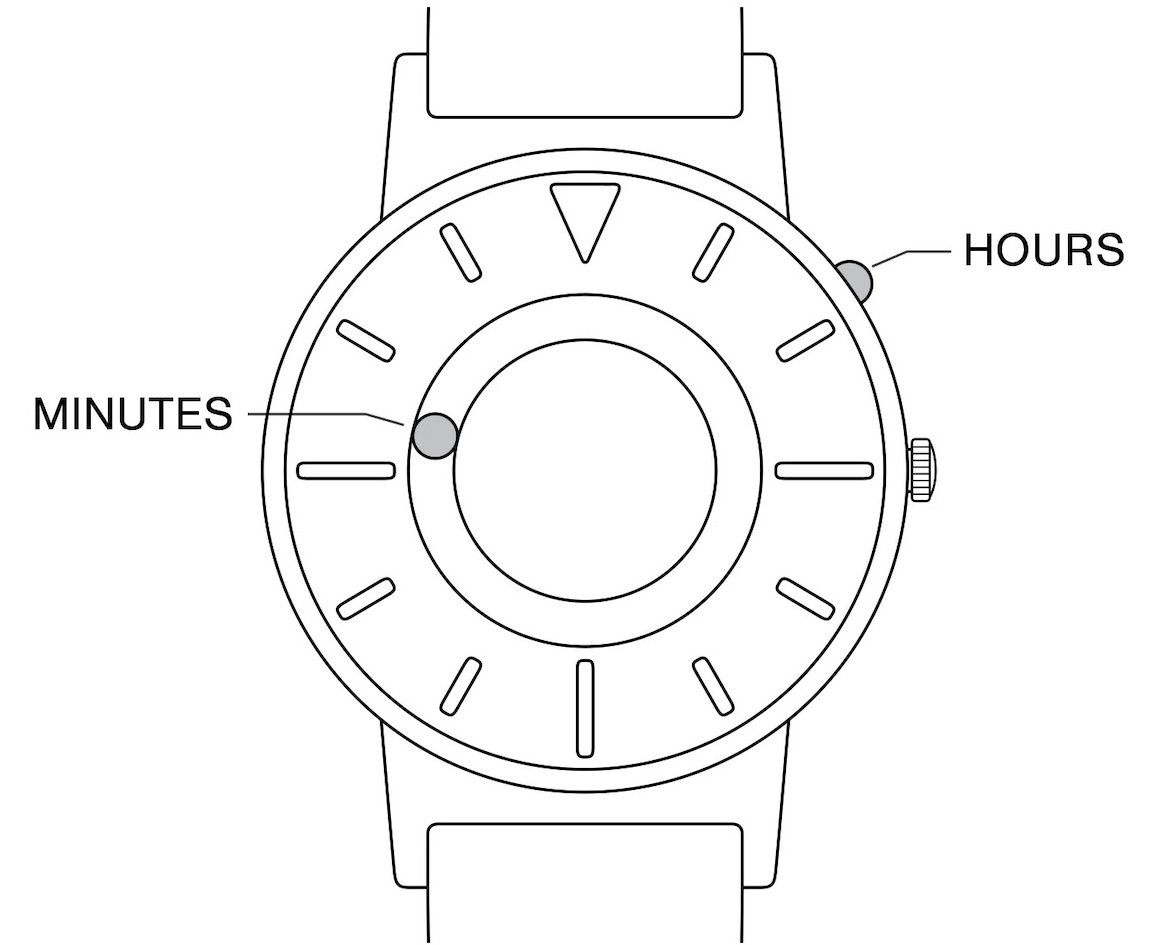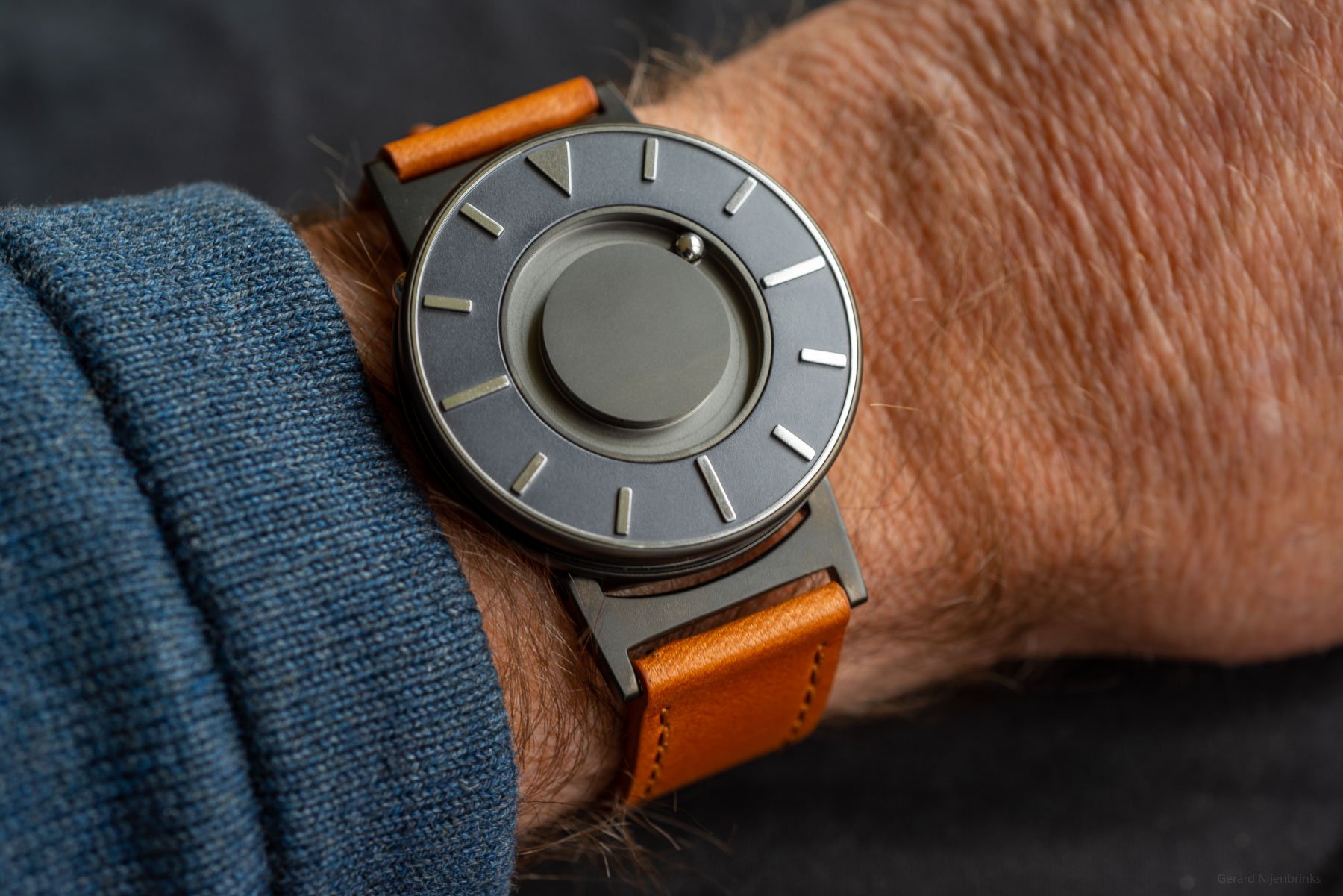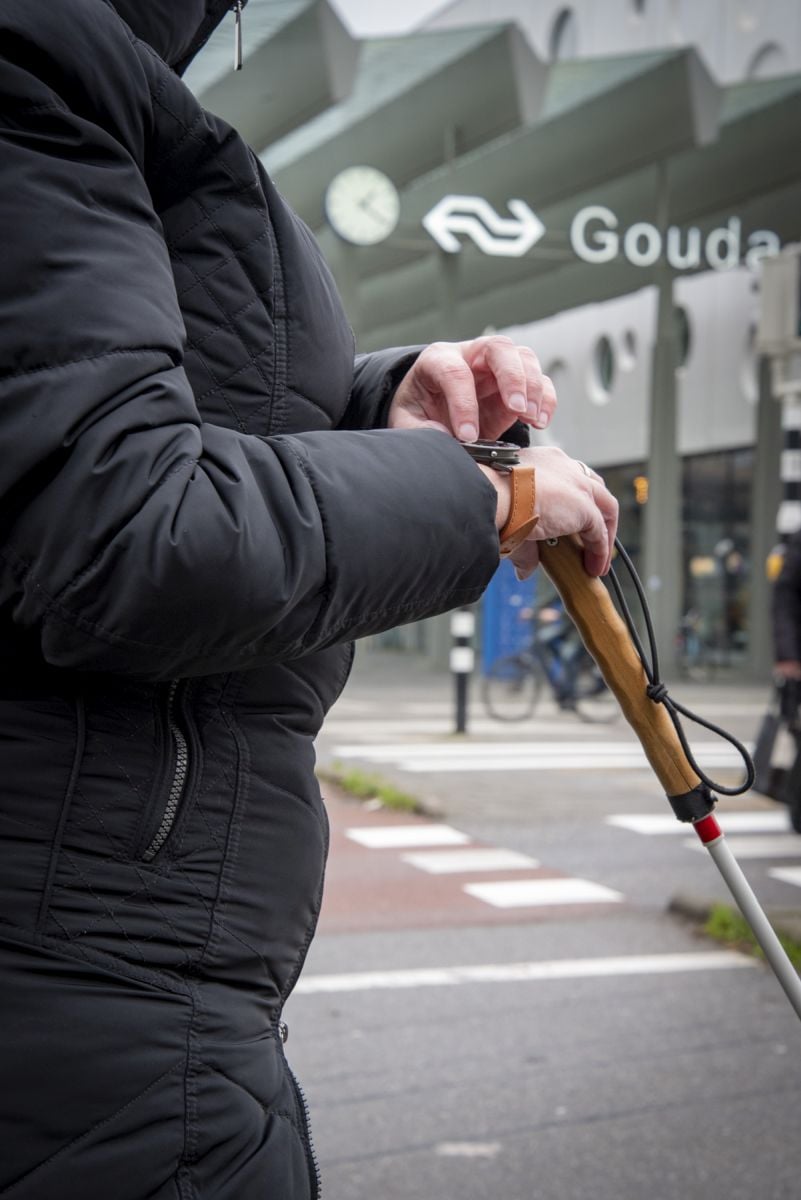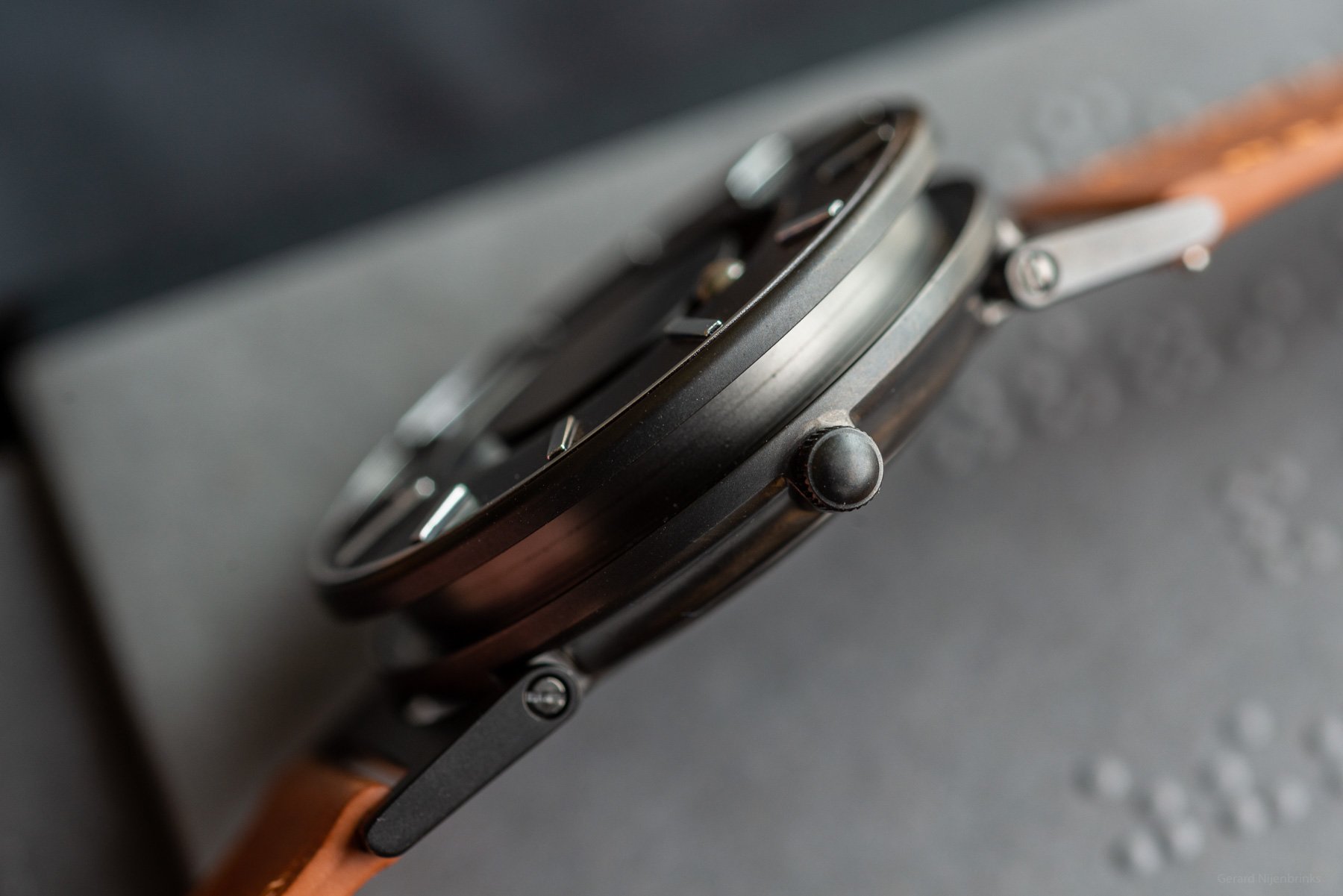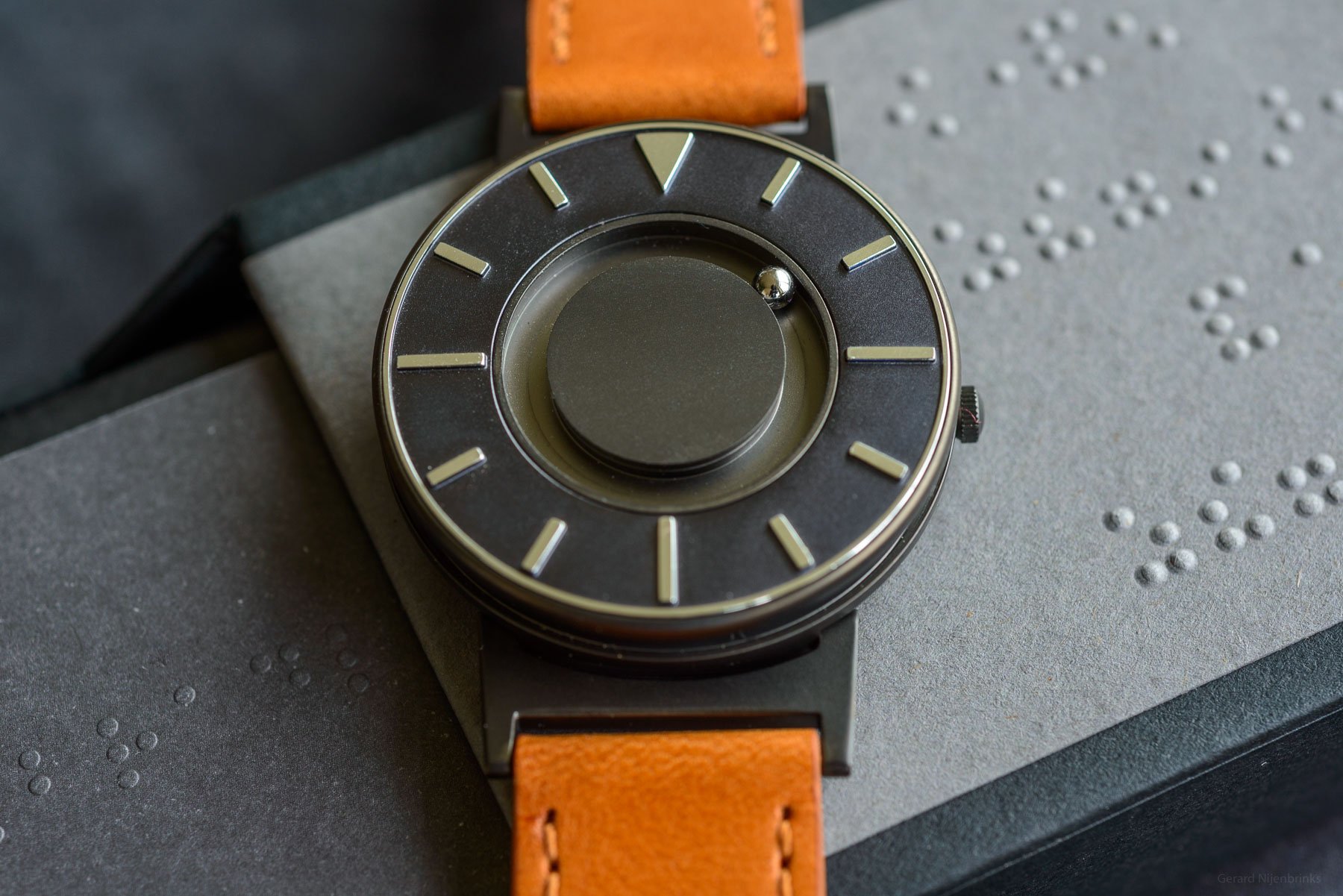A Field Test With The Eone Bradley Voyager Cobalt — A Truly Inclusive Watch Design
Eone has created a sleek, modern watch designed for people with or without vision impairment. A good design and inclusion for persons with disabilities go hand in hand here. The result, sometimes called inclusive or universal design, addresses as many people’s needs and abilities as possible. The focus is on the design so that users with diverse needs can enjoy the product.
The idea for the Eone Bradley started as a simple problem shared between friends. It blossomed into Eone’s mission to create a beautiful and functional product that meets the needs of many people. The Bradley timepiece is named after former US Navy officer Bradley Snyder, who lost his vision in an IED explosion in Afghanistan. After that, he learned how to thrive in a world not designed for people with vision impairment. He even competed in the 2012 and 2016 Paralympic Games, winning multiple gold and silver medals. Bradley Snyder became Eone’s spokesperson because of his dedication to breaking down barriers for people with visual disabilities.
The Eone Bradley Voyager Cobalt review
We reached out to Eone to do a hands-on review of the Bradley, and the brand generously supplied us with a sample. Of course, in order to do such a review right, we needed help from someone with visual impairment. Therefore, I contacted Bonnie de Heij. Bonnie — visually disabled herself and always interested in investigating possibilities for people with vision impairment — was happy to help us out and wear the watch long enough to make a solid verdict. But before penning down Bonnie’s experiences with the Eone Bradley Cobalt Voyager, let’s have a look at the watch itself.
Look Mum, no hands!
Looking at the Eone Bradley, it becomes immediately clear that regular hands are missing. Yes, the watch shows something like a dial with indexes for the hours. But there are no hands, and there is no crystal either. However, at a second glance, you notice a small metal ball running on a circular track on the front of the watch. In addition, there’s a second small metal ball running on another circular track, but this one isn’t on the front side of the watch; it’s running on the side of the case itself. These two metal balls replace the hands of a regular timepiece. Driven by tiny magnets, they run around in their circular slots, functioning as the hour and minute hands.
It might seem strange for people without a visual disability that the outside ball functions as the hour hand, while the ball on the front acts as the minute hand. Our eyes are used to seeing it the other way around, with minutes on the outside and hours on the inside. This highlights the fact that, without this visual reference, it’s quicker to feel the time using the minute ball on the front and the hour ball on the side of the watch. Often, the minutes will be enough to tell the time, as hours are easier to determine without touching or seeing them. We often know the hour without a watch or a clock. In that case, the minutes are all we need to tell the time.
The finishing touch
For a watch that tells the time through tactile sensations, the finish and use of suitable materials are essential. The Bradley Voyager Cobalt features raised hour markers. There’s a triangular marker for twelve, elongated line segments for three, six, and nine, and shorter line segments for the other markers. All markers are smoothly polished and raised so the user can feel them comfortably, and the dial itself is made of aluminum. The 40mm case is stainless steel, and it comes in at 11.5mm in thickness. The watch attaches to the wrist with a cognac-colored, soft Italian leather strap with nylon stitching.
Bonnie’s verdict
To learn Bonnie’s verdict on the Eone Bradley Voyager, I posed her a few questions in an interview style.
Gerard: Hi, Bonnie. After you used the Eone Bradley for a few weeks, what are your general thoughts about it?
Bonnie de Heij: Obviously, seeing is complicated or impossible if you’re blind or severely visually impaired. Fortunately, we have other senses to perceive something. Hearing and touch are the two senses that make it possible to absorb information with a visual impairment. Speech technology, such as Siri or voiceover on a smartphone, is a great way to have the world at your fingertips through speech. But a computer voice is impersonal and sometimes inconvenient. When in a meeting, as a blind person, finding out what time it is can be disruptive if the voice speaks the time out loud. It’s also difficult when you need the time at a busy, noisy station and cannot understand what your smartphone is saying.
So yes, then touch — as used by the Eone Bradley to tell the time — is another sense that can give you information and one that you always have with you! It doesn’t interfere, it doesn’t stand out, and it doesn’t require more technology than your fingertips.
Shake before use
Indicating the hour and minutes via two magnetic balls is convenient and practical. The design is attractive and stylish, both for the visually impaired and people with regular eyesight. Additionally, Eone uses materials that are pleasant to the touch. The only drawback is that the balls occasionally drift away from the magnetic field, so you have to shake the watch a bit to get the balls back to their proper place before use.
Not only speech technology but also the sense of touch can now assist visually impaired people in telling the time. Having the choice is pleasant in the daily lives of blind people. All too often, they’re already dependent, without freedom of choice or personal taste. The Eone Bradley makes a bit of this freedom available, which feels good!
Gerard: I’m glad you liked the Eone Bradley, Bonnie. That’s an impressive explanation. I have some additional, more detailed questions; do you mind?
How did you like the hour ball on the outside and the minute ball on the top? It’s different from a regular watch, where the outside track and the longest hand indicate the minutes, and the shorter hand indicates the hours. Of course, that difference is visually prompted, and I wonder how you experience it.
Bonnie: As for the dots that are at a different position from the hands on a regular dial, that’s no issue for me. It is different, but I didn’t notice it until you asked. Maybe that’s also because I haven’t read a traditional dial in so many years that it’s fading a bit. You — people who can see — have that visual picture in your heads and compare it to this watch. But I see it as two different methods.
Gerard: Can you tell us something about the packaging of the Eone Bradley? I don’t know if you unpacked it yourself, but if so, was it convenient, or was it challenging to get it out of the packaging? Did the Braille manual and the Braille information on the packaging help you?
Bonnie: The Eone Bradley came in a kind of sliding box. That’s very convenient for people with poor eyesight because you don’t have to pick at the tabs or figure out which side is the top and which is the bottom. In my case, Braille is of no use because I can’t read it. You learn Braille especially when you see so poorly as a child that regular reading is no longer possible. In my case, I could read normally until I was 25. But this watch is probably bought by people who have been blind all their lives or for a long time, and in that case, Braille is ubiquitous. However, it is not the case that every visually impaired person can read Braille; on the contrary, there are some who cannot. But, of course, it is a friendly and accessible gesture from the supplier.
Gerard: One last question, Bonnie. You told me you like the watch very much, but still, it isn’t exactly your taste. What’s the main reason for that?
Bonnie: In terms of form and shape, I think it’s a pretty masculine watch. In my experience, it was relatively thick. I have small wrists, and the watch is quite present, primarily because of its size. It’s probably due to the magnets’ construction and the minute and hour balls that need a track at the top and bottom to run through. I also understand that the balls can’t be more petite because, in that case, you can’t feel them anymore. Also, the colors of this Voyager Cobalt version — the brown strap and gray and black of the watch case — are not exactly my taste. But to be honest, I haven’t worn a watch in years, so maybe it’s just that I’ve forgotten what it’s like to wear one.
Gerard: Thank you very much for your time, your thorough testing, and adequate considerations, Bonnie!
Conclusion and pricing
The Eone Bradly is a truly inclusive design. It’s an attractive watch for anyone, and very functional for people who are visually impaired. All in all, it looks and feels like exactly what it is — an honest, quality product.
The price of €295 was a surprise for me, and obviously, it was a pleasant one at that. The finishing of the watch, the materials used, the packaging, and everything about it suggests a higher price tag. Plus, it’s an out-of-the-ordinary product that won’t be seen on everyone’s wrist, which makes it desirable, in my opinion. Visit Eone’s website to find out about all color and material variations and, of course, for the chance to order your own.

